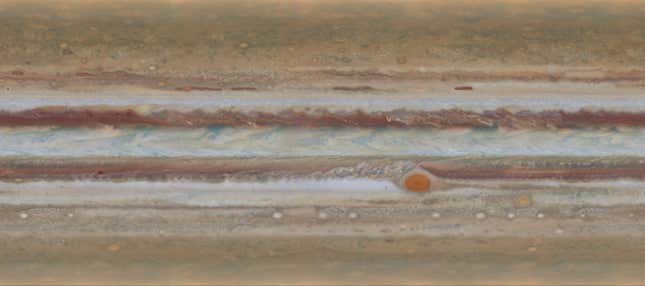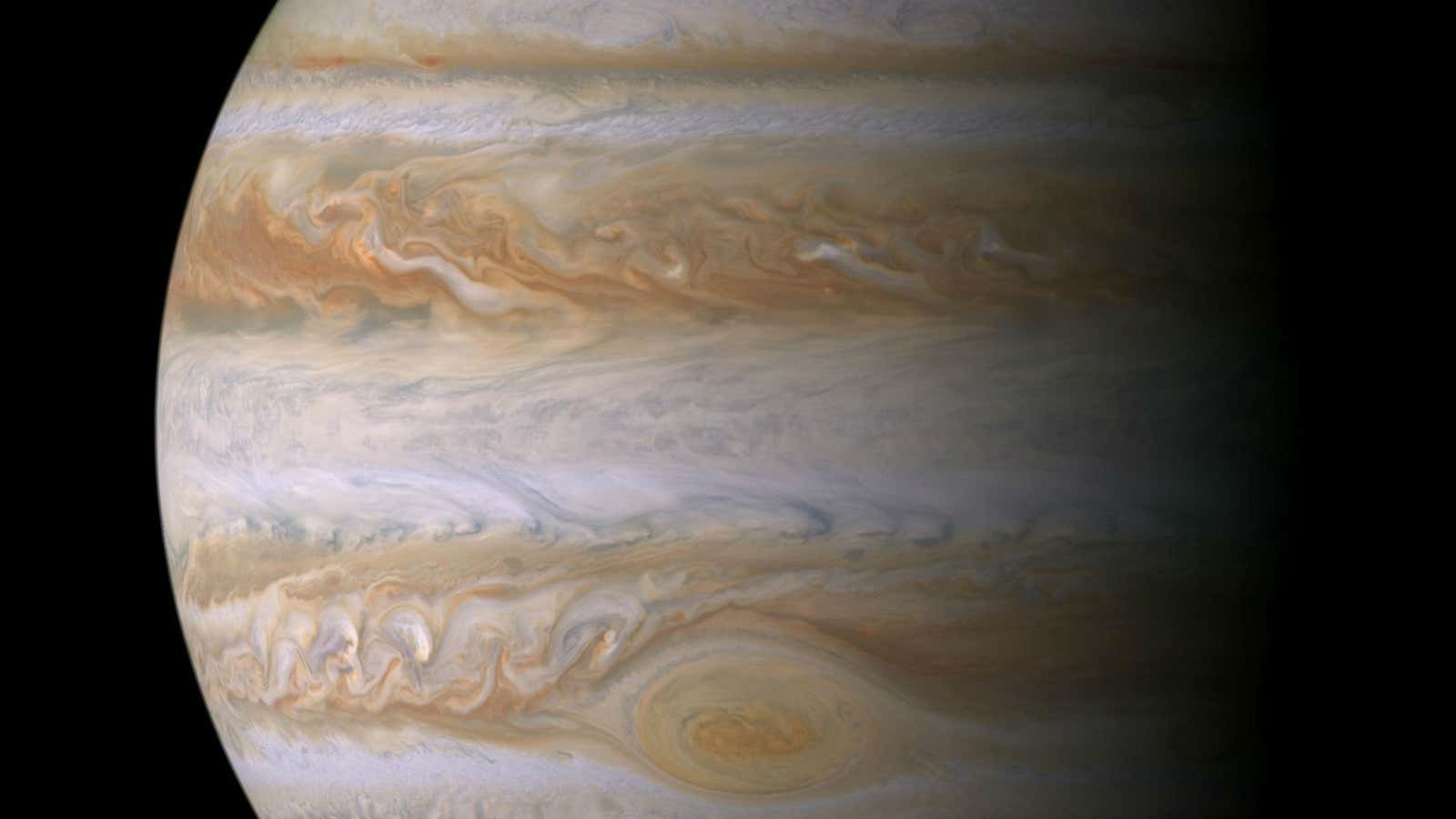The Hubble space telescope is still kicking, and it just gave us one of the most stunning views ever of our solar system’s largest planet.
In what NASA is calling “the planetary version of annual school picture days,” Hubble snapped its yearly images of Jupiter as part of the Outer Planet Atmospheres Legacy Program. (Saturn, Uranus, and Neptune are next to have their school pictures taken.) NASA compiled the images to create this 4K HD video of the gas giant (make sure you switch the YouTube playback setting to 4K):
Besides being mesmerizing to look at, the images yield a number of surprising discoveries. The Great Red Spot—the solar system’s largest perma-storm, the size of three Earths across—is still shrinking. NASA says it’s about 150 miles (240 kilometers) shorter today than it was last year. (You still wouldn’t want to get caught up in it—its 330 mile-per-hour winds are well over twice as strong as the winds of a Category 5 hurricane.)
“Every time we look at Jupiter, we get tantalizing hints that something really exciting is going on,” said Amy Simon, a planetary scientist at NASA’s Goddard Space Flight Center, in a press release. “This time is no exception.”
The images also showed that the Spot’s core is less intense in color than it used to be, possibly another sign that it’s slowly dissipating. NASA scientists observed a strange, never-before-seen “filament” spanning the length of the storm.

But perhaps the most surprising discovery of all is that Old Hubble is still very much alive and furthering our understanding of space. In April, the telescope turned 25 years old, ancient in space-technology years. Its parts are degrading and its orbit is decaying, but as long as it still works, NASA will continue to take advantage of it.
Hubble is expected to last at least another decade or so. NASA will launch the James Webb Space Telescope—Hubble’s successor—in 2018.
In the meantime, if you enjoy the beauty of space in 4K, you’re in luck. NASA will soon roll out a new TV channel that broadcasts exclusively in 4K ultra high-definition and will be available to stream online for free, around the world.
